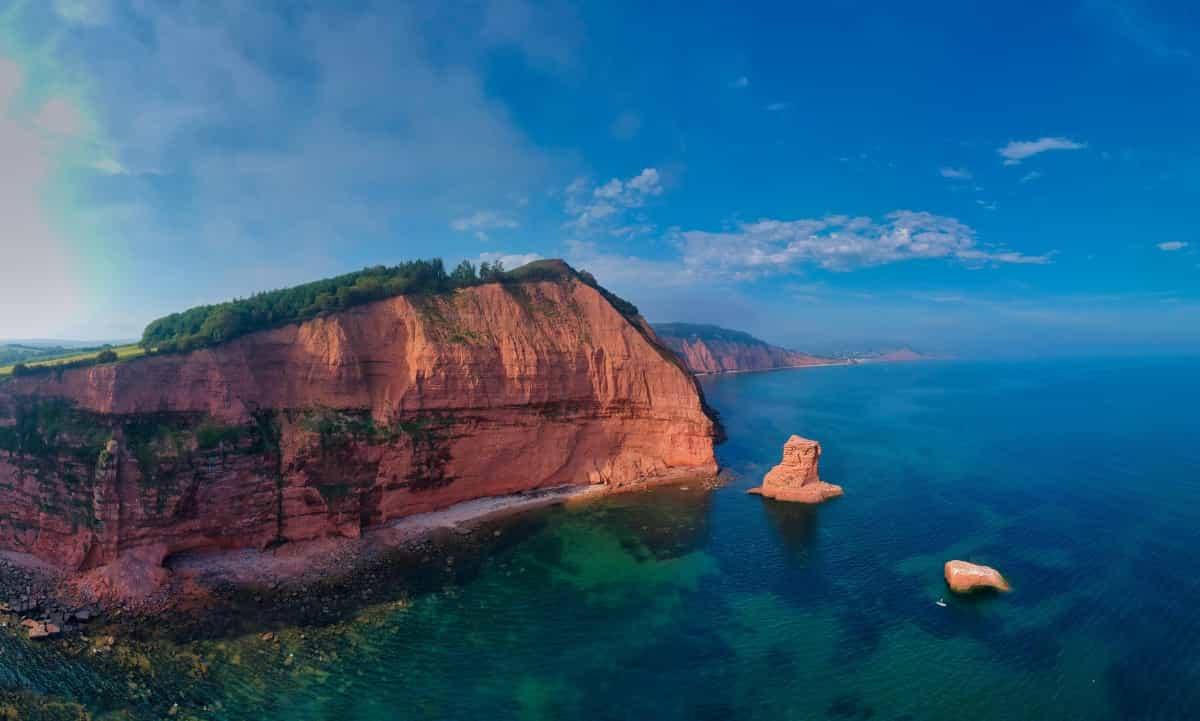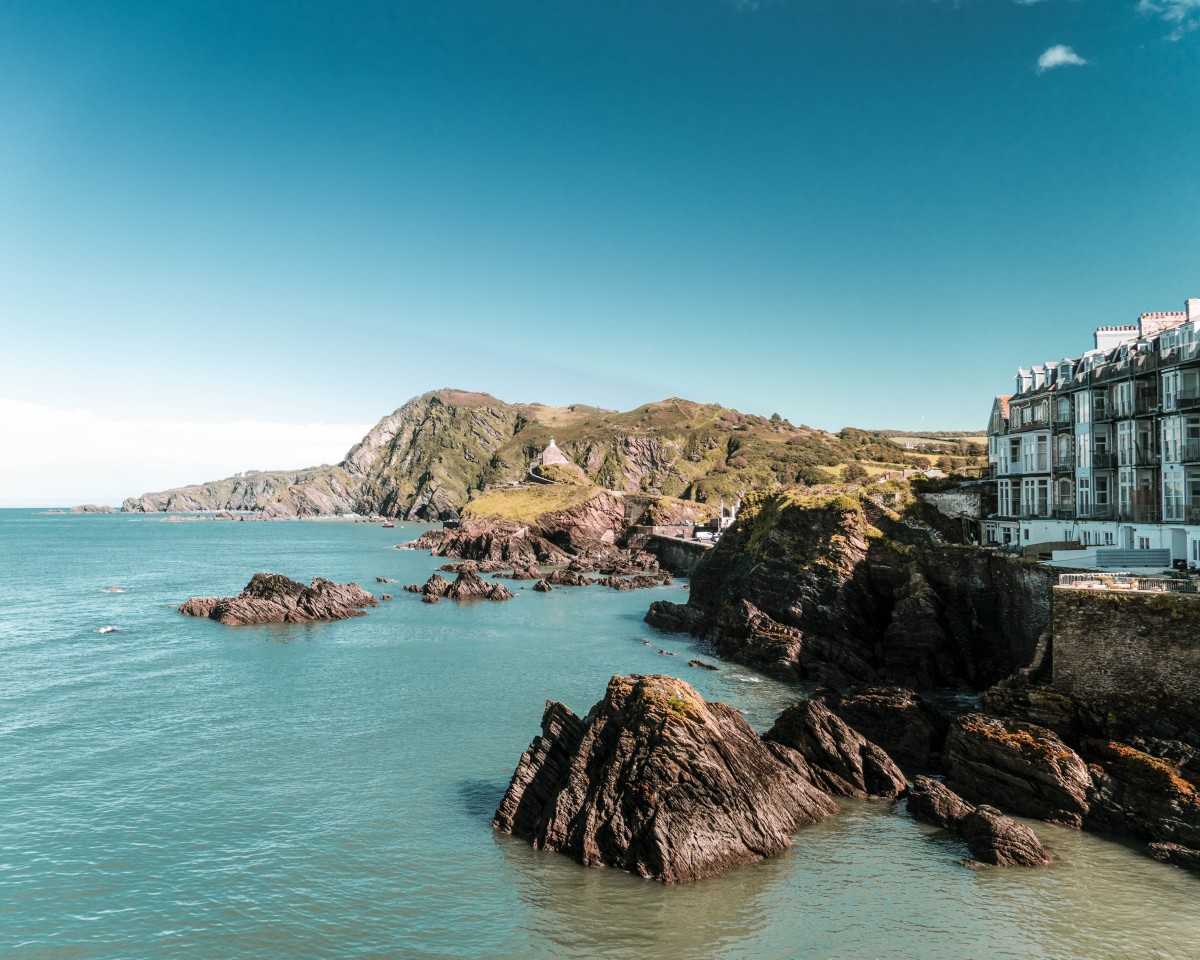How To Walk The South West Coast Path On A Budget
Whether you’re a seasoned footslogger or a holiday hiker, the South West Coast Path is a walking experience like no other. One minute you’re clambering along the edge of rugged cliffs, the next you're descending to spectacular beaches. The route traverses dramatic moorland and scales imposing peaks before plunging into hidden coves where dinosaurs once roamed and smugglers hid their booty.
The South West Coast Path is the longest of the UK’s National Trails. It stretches over 600 miles from Minehead in Somerset to Poole in Dorset. If you have an ambition to walk around the coast of Britain in its entirety, the South West walking trail would tick off nearly 10% of your journey.
Following an historic network of long-distance paths, once patrolled by coastguards and excise officers, the South West Coastal Path has epic ocean views, dramatic landscapes, pretty ports and historic towns. It's not a cheap part of the country, but walking the South West Coast Path on a budget is possible when you know what to look for.

It’s as difficult or as easy as you make it
The South West Coast Path is as lengthy as you want it to be: it's 630 miles in total, but it can be done in stages. Step onto it for a short dog walk or set aside six to eight weeks to thru-hike the whole route. Some sections make a challenging trek and some a relaxing stroll. Use the South West Coast Path distance calculator to plan your walking portions.
If you wander, or even run, the entire trail you can congratulate yourself with an ‘official’ certificate and badge from the South West Coast Path Association (proceeds go to path projects). Merely joined a section to blow off the cobwebs? A reward of dessert after lunch at one of the many pubs along the way is just as satisfying.
The hike is actually the ideal long-distance trail for beginners because the route is easy to follow. There are loads of South West Coast Path guide books to accompany you, and it’s waymarked all along its length. There are a few dramatic cliff-edge drops though – important to keep in mind if you suffer from vertigo. You’ll need to do a bit of scrambling now and then, so sturdy footwear and an eye on the weather are essential.
The route's length means that it also fits neatly into the school or uni summer break. There’s tons of low-price accommodation along the South West Coast Path, including youth hostels and campsites. So if you’re a student, taking the family along or just after a stripped-back hiking experience, you can complete the South West Coast Path while taking care of the pennies.

Plot your South West Coast Path route
Most walkers tackle the South West Coast Path in an anti-clockwise direction. There is possibly a hardest-part-first logic for doing it this way. The route’s early stages head along the wild edges of Exmoor and some of the most far-flung parts of the region’s coastline. As the trail ends in the genteel resort of Poole, it makes for a suitably relaxing place to finish too, but there’s no reason you can’t take it clockwise.

Where to stay along the South West Coast Path on a budget
Wild camping on the South West Coast Path may seem the cheapest option, but sadly it isn’t permitted. There are plenty of affordable and peaceful campsites along the way, though, starting from as little as £8 per pitch.
On our journey, we’re heading anticlockwise as we tick along a few of the best campsites on the South West Coast Path. We’ve picked just a handful of stretches towards the beginning, and then added a camping tip for when you’ve completed the final stage of the route.
Minehead to Westward Ho! and the Hartland Peninsula - distance 105 miles
The first step on the South West Coast Path is one filled with excitement, the odd lingering doubt, and anticipation of the adventure to come.
The stretch from Minehead to Westward Ho! and the Hartland Peninsula takes you along the highest coastline in Britain and skirts the vast swathe of green that is Exmoor National Park. You’ll saunter along the trail for a while before the first testing climb on the trail – the 318-metre height of the Great Hangman.
What follows are enormous sandy beaches interspersed with pretty, historic towns like Ilfracombe and Woolacombe as you make your way to Westward Ho! The seaside town, famed for its surfing and sandy beach, is the only place in Britain with an exclamation mark in its official name.

Beyond Westward Ho! lies the Hartland Peninsula – the route here has the most spectacular walking on the entire South West Coastal Path.
Rest up for a night at Hartland Caravan and Camping Park, a short way inland up the Taw-Torridge Esturay in Hartland village near the town of Bideford. As well as distant sea views out to Hartland Quay, the campsite has a fishing pond for avid anglers and is a short walk from the village’s country pubs for a bite to eat.
Westward Ho! to Boscastle - distance 53 miles
The route from Westward Ho! to Boscastle is one of the most remote of all the Devon to Cornwall coastal path walks. You’ll have passed ancient seaside settlements, stopped on quiet sandy beaches and skirted stark geological sights by the time you reach the Cornish harbour town.
A rest will be in order when you arrive in Boscastle. Pause awhile at the Elizabethan quay framed by an amphitheatre of cottages, shops and tearooms that stretch down to the sea before you head to your campsite for the night.
Trebyla Farm is a short walking distance from the South West Coast Path and is the closest campsite to Boscastle. This family-owned spot sits alongside a farm that the Brights have worked for more than 60 years. Wake up to the gentle sounds of mooing as you take in the sea views refreshed and ready to pull on your walking boots all over again.
Alternatively, Lower Pennycrocker Farm is two miles from Boscastle. At the lower end of the campsite a public footpath leads directly to the South West Coast Path. The campsite is a big open field with coastal views and there’s an honesty shop to pick up a few essentials.

Boscastle to Newquay - 50 miles
The tourist resort of Newquay is a couple of days’ walk from Boscastle. Once you arrive in the Cornish surfing capital, you’ll have passed through thousands of years of British history and seen some great places.
This stretch scrambles through the Rocky Valley (a ravine containing Bronze Age carvings) and passes Tintagel and its castle (thought to have been the home of King Arthur). It stops at ancient fishing settlements, then crosses the Camel Estuary via ferry to reach Padstow. Pause to paddle on golden sands and take a swim in one of the many secluded coves along the way.
Upon reaching Newquay, Trevella Park rewards the long-distance or short-stroll walker with five-star facilities. It’s a friendly campsite with loads for the kids to get stuck into, from a swimming pool to a crazy golf course. The park is close to the village of Crantock’s sandy beach, which sits just off the South West Coast Path.
To sample the best of Newquay as a holiday resort, Trencreek Holiday Park makes a good base. The family-run site is just a 20-minute walk from the tourist centre and has tennis courts, a swimming pool, play parks, a shop and a clubhouse.

And once you’ve done the South West Coast Path…
After you’ve reached Poole, having traversed part of the Jurassic Coast and completed the South West Coast Path, you may be ready for home. If you’re headed northwards to pick up the motorways linking Dorset to the rest of the UK, you might even be ready to savour inland country views instead of seaside vistas by this point.
That would make the Back of Beyond Touring Park a prime place. The campsite is in St Leonards, around a half-hour drive north of Poole. Set on heathland in a wooded vale, it’s close to lakes and river walks. This is a peaceful spot with touring and camping pitches, along with a glamping village, gypsy caravans, shepherd’s huts and a wild camping area.
Alternatively, if you’d prefer to spend a little longer amongst the splendour of Poole and its coastline, check out the best Dorset campsites that are near the beach.